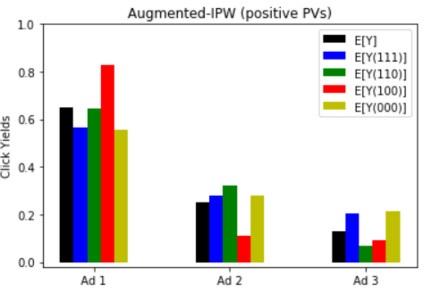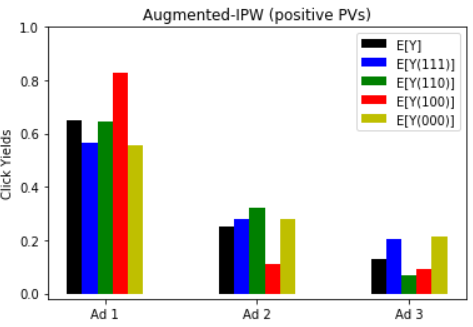In classical causal inference, inferring cause-effect relations from data relies on the assumption that units are independent and identically distributed. This assumption is violated in settings where units are related through a network of dependencies. An example of such a setting is ad placement in sponsored search advertising, where the clickability of a particular ad is potentially influenced by where it is placed and where other ads are placed on the search result page. In such scenarios, confounding arises due to not only the individual ad-level covariates but also the placements and covariates of other ads in the system. In this paper, we leverage the language of causal inference in the presence of interference to model interactions among the ads. Quantification of such interactions allows us to better understand the click behavior of users, which in turn impacts the revenue of the host search engine and enhances user satisfaction. We illustrate the utility of our formalization through experiments carried out on the ad placement system of the Bing search engine.
翻译:在典型的因果推断中,从数据推断因果关系所依据的假设是,单位是独立的,分布相同。这种假设在单位通过依赖关系网络联系的环境中是违反的。这种假设的例子之一是在赞助的搜索广告中放置广告广告广告广告广告,其中某个特定广告的可点击性可能受到其放置地点的影响,而其他广告则被放在搜索结果页面上。在这种假设中,混淆的原因不仅在于单个的顶级同级同级同级同级同级同级同级,而且还在于系统中其他广告的放置和同级同级。在本文中,我们利用干扰的因果推论语言来影响广告之间的模型互动。这种互动的量化使我们能够更好地了解用户的点击行为,这反过来又影响主机搜索引擎的收入,提高用户的满意度。我们通过在宾格搜索引擎的定位系统上进行的实验来说明我们正式化的效用。







